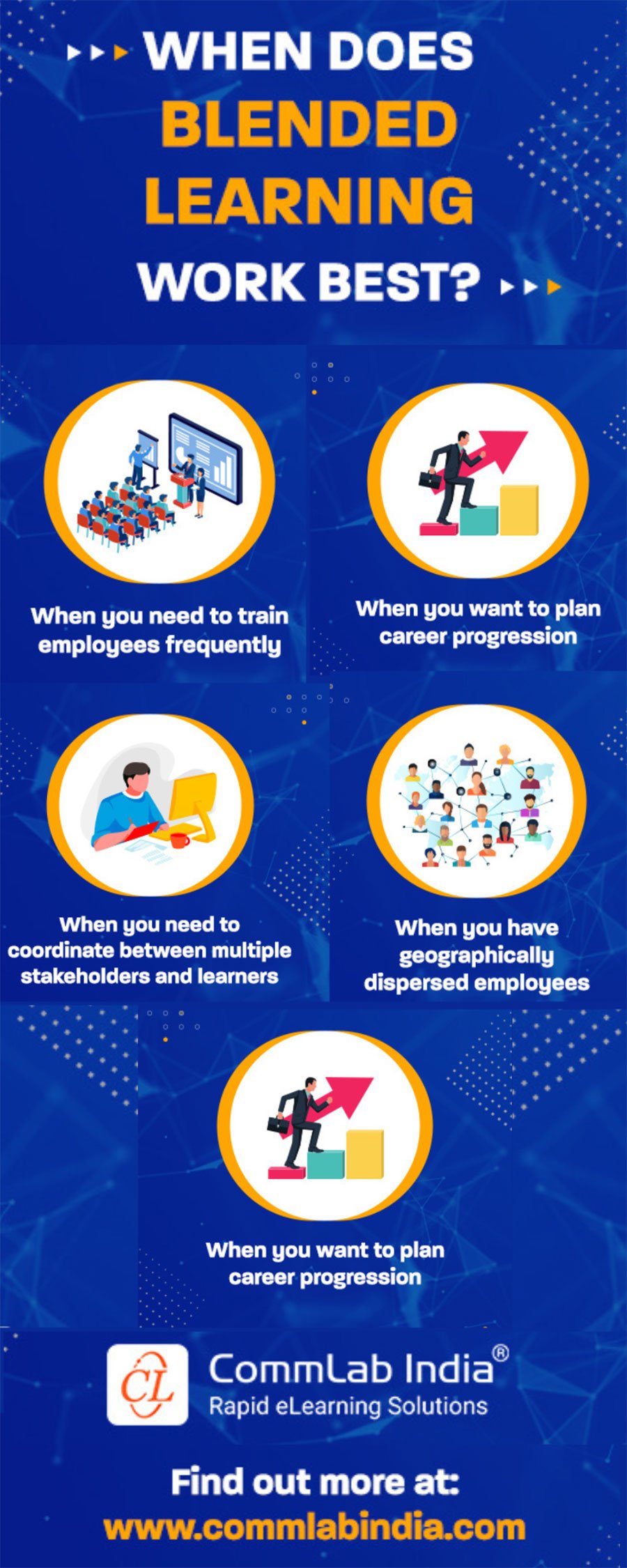When Does Blended Learning Work Best [Infographic]
![When Does Blended Learning Work Best [Infographic] When Does Blended Learning Work Best [Infographic]](https://blog.commlabindia.com/hubfs/blogs/When-Does-Blended-Learning-Work-Best-%5BInfographic%5D.jpg)
Training and development have undergone a remarkable transformation in recent years, and at the forefront of this change is the concept of blended learning. Blended learning combines traditional classroom instruction with online resources, creating a dynamic and flexible learning experience. This blog will explore what blended learning is, its benefits, when it works best, and why it's shaping the future of training.
What is Blended Learning?
Blended learning is an approach that integrates in-person classroom instruction with digital or online learning methods. It seeks to strike a balance between traditional face-to-face teaching and the advantages of technology-driven training. In a blended learning environment, learners access content, engage in activities, and interact with peers and instructors through a combination of physical classrooms and digital platforms. Here are some benefits of blended learning.
→ Get Now: Blended Learning: A Guide to Boost Employee Performance
Benefits of Blended Learning
Personalized Learning
Blended learning allows for personalized learning paths, catering to individual learners’ needs. Learners can progress at their own pace, revisiting content as needed or advancing more quickly if they excel.
Flexibility
It offers flexibility in terms of time and location. Learners can access online materials and participate in discussions from anywhere, enabling a more accommodating learning schedule.
Enhanced Engagement
Blended learning often incorporates multimedia elements and interactive activities that can enhance learner engagement and comprehension.
Data-Driven Insights
Digital tools provide data on learner performance, enabling trainers to identify areas where learners may need extra help and adapt instruction accordingly.
Cost Efficiency
Blended learning can reduce costs associated with traditional learning, such as textbooks and classroom space, while still delivering quality training.
Explore when blended learning will work best for your organization for effective implementation.
Why Blended Learning is the Future
Adaptability: Blended learning offers adaptability in the face of unforeseen circumstances. It allows for a seamless transition between in-person and remote learning.
Continual Learning: Blended learning aligns with the growing need for continuous learning throughout. It equips learners with digital literacy skills, crucial in today's information-driven world.
Customized Learning: It allows trainers to tailor instruction to each learner’s needs, promoting more effective learning outcomes.
Global Reach: Blended learning transcends geographical boundaries, enabling access to a global pool of training resources and expertise.
Wrapping it up!
Blended learning represents a paradigm shift in training, offering a flexible, adaptable, and personalized approach to learning. Its potential benefits and capacity to address the evolving needs of training make it a transformative force in the field. As we look to the future, blended learning is poised to become a cornerstone of modern learning, shaping how learners learn and trainers train in the digital age. Learn more about blended learning with our eBook. Gain actionable insights about blended learning and boost employee performance.






![What Exactly is the Bookend Blended Learning Model? [SlideShare]](https://blog.commlabindia.com/hubfs/Imported_Blog_Media/blended-learning-bookend-model-slideshare.jpg)
![Blended Learning for Corporate Training: Overcome 3 Implementation Challenges [Infographic]](https://blog.commlabindia.com/hubfs/Imported_Blog_Media/blended-learning-implementation-challenges-solutions-info-v1.jpg)